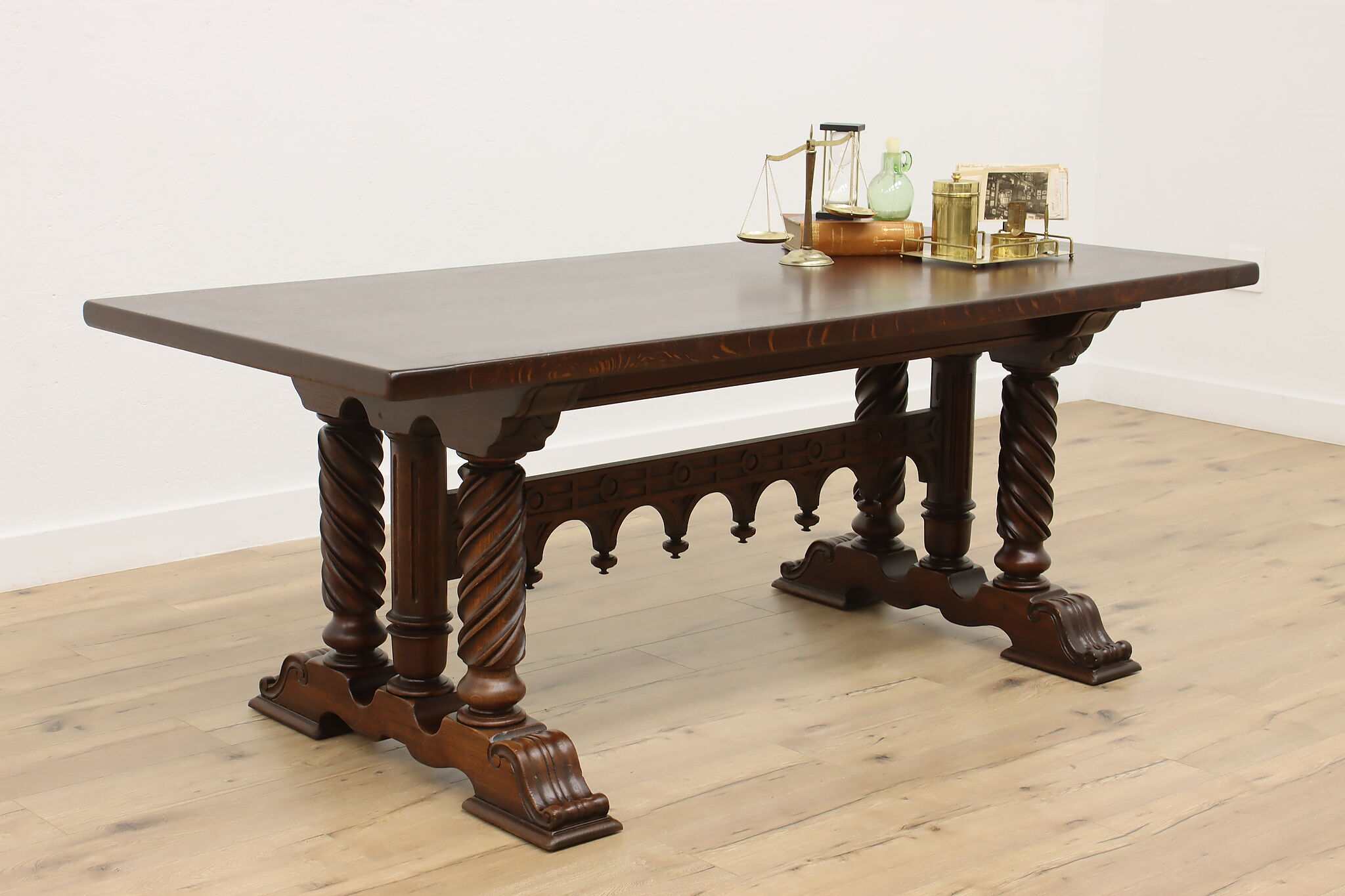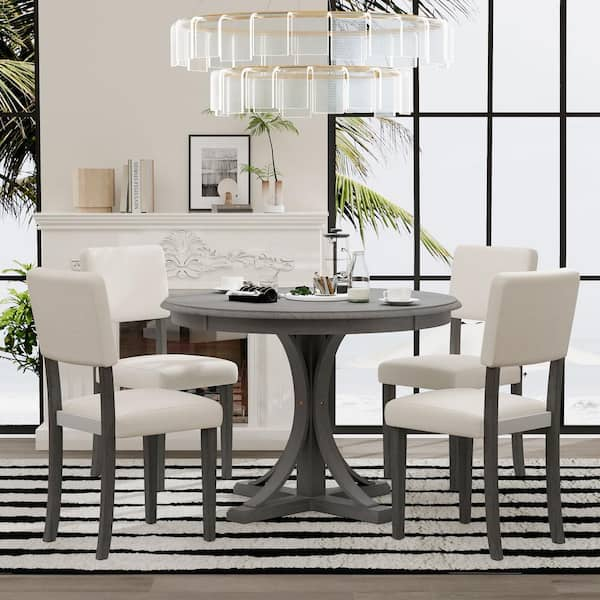Find the Ideal Dining Room Table Legs for Any Interior Design Style
From Conventional to Modern: Find the Perfect Dining-room Table Legs for Your Design
The choice of dining area table legs plays a crucial function in specifying the general character of your room, bridging the gap in between conventional workmanship and contemporary aesthetic appeals. While traditional styles such as cabriole and turned legs stimulate a sense of ageless elegance, contemporary designs like barrette and geometric choices present a possibility for striking aesthetic interest. Assessing the appropriate equilibrium between these designs needs a nuanced understanding of your existing design and personal taste. As you think about these aspects, the question stays: exactly how can you flawlessly incorporate these diverse leg styles to create a harmonious eating experience?
Comprehending Table Leg Styles
The variety of dining-room table leg designs can considerably affect both the aesthetics and performance of the space. Each leg style adds special sensible functions and aesthetic aspects, accommodating diverse layout preferences and usage demands. Understanding these styles is crucial for picking the appropriate table that lines up with your overall interior decoration vision.
For circumstances, conical legs supply a tidy, classic look that can improve an area's beauty, while pedestal bases provide stability and take full advantage of legroom, making them perfect for smaller areas. Hairpin legs, a hallmark of mid-century modern layout, introduce a commercial flair, permitting an airy, open feel. Likewise, trestle legs evoke rustic charm, providing robust support and a feeling of timelessness.
Additionally, the option of products plays a considerable role. Wooden legs can bring warmth and structure, whereas metal choices usually share a streamlined, modern ambiance. Eventually, comprehending table leg styles is important for creating a natural dining location that reflects personal style while making sure practicality and convenience. By attentively thinking about these components, you can improve both the visual and useful appeal of your eating room.
Traditional Table Leg Options
When choosing eating area table legs, traditional options commonly personify classic beauty and craftsmanship. These styles show an abundant heritage and a dedication to quality, making them optimal for those that appreciate traditional appearances.
Among the most iconic conventional leg styles is the cabriole leg, characterized by its elegant bent shape. This style commonly includes attractive makings and is most generally located in Queen Anne and Chippendale furnishings. An additional preferred alternative is the transformed leg, which flaunts a collection of smooth, rounded forms that supply a traditional look while preserving stability.
Additionally, the straight leg, while easy, provides a unadorned and tough framework that can mix effortlessly with a range of tabletop styles. For those drawn to ornate describing, claw-and-ball feet legs stimulate a feeling of magnificence and can function as a sensational centerpiece in any dining room.
Last but not least, pedestal bases, although not strictly legs, give a different standard alternative that permits for sufficient legroom and can be perfectly sculpted. Each of these conventional leg styles adds to the general ambiance of a dining-room, weding function with aesthetic allure.

Modern Table Leg Styles
Modern table leg designs use a diverse series of styles that stress clean lines and cutting-edge materials. These designs commonly prioritize performance while working as striking prime focus within an eating area. Minimal aesthetic appeals are prevalent, with legs crafted from materials such as steel, glass, and crafted timber, which add to a airy and contemporary feel.
One preferred design is the barrette leg, identified you could look here by its slender, conical framework that provides stability without frustrating the tabletop (dining room table legs). This design is commonly discovered in mid-century modern-day furniture and can effortlessly complement numerous table forms. Another trend is making use of geometric forms, where legs may tackle unbalanced or angular types, including aesthetic passion and a touch of virtuosity

Mixing Styles for Distinct Spaces
Frequently, homeowners seek to develop one-of-a-kind eating areas that mirror their individual design by mixing different design aspects. This technique permits the his comment is here unification of varied aesthetics, resulting in a harmonious yet distinct atmosphere. Matching a rustic wood table with smooth, modern steel legs can produce an eye-catching comparison that elevates the area's general allure.
Furthermore, integrating vintage table legs with modern tabletops can stimulate a feeling of history while preserving a modern perceptiveness. Such combinations not just showcase private taste however also encourage creative thinking, enabling home owners to curate an area that really feels both personal and welcoming.
Shade plays a critical role in this mixing process; choosing table legs that enhance or contrast with the existing shade scheme can improve aesthetic interest. For instance, whitewashed legs can soften the daring of a dark table surface, producing a balanced aesthetic.
Tips for Choosing the Right Legs
Choosing the right table legs is crucial for Our site accomplishing both capability and visual appeal in your dining room. Begin by considering the overall style of your area. Traditional settings profit from legs that include detailed carvings or turned layouts, while contemporary areas may ask for sleek, minimal styles.
Following, analyze the height and security of the legs. dining room table legs. Standard dining tables vary between 28 to 30 inches in height, so make certain the legs complement this measurement for comfort. Furthermore, robust materials, such as hardwood or metal, can improve security and long life
Review the leg form too-- options include straight, tapered, or pedestal designs. Straight legs offer a classic look, while tapered legs can add a touch of elegance. Pedestal bases offer sufficient legroom and are optimal for smaller sized areas.
Final Thought
In recap, choosing the optimal dining space table legs calls for cautious consideration of both conventional and contemporary styles. Traditional options such as cabriole and transformed legs use ageless beauty, while contemporary designs like barrette and geometric forms offer a contemporary touch. By integrating leg design, elevation, and material with the total décor, a natural and welcoming environment can be achieved. Inevitably, the picked table legs must reflect the wanted visual, improving the eating experience within the room.
The variety of eating room table leg designs can substantially influence both the aesthetics and performance of the space. Inevitably, understanding table leg designs is vital for creating a cohesive eating area that shows personal design while ensuring functionality and comfort.One of the most famous conventional leg designs is the cabriole leg, characterized by its stylish bent shape. Straight legs supply a traditional look, while tapered legs can add a touch of elegance.In summary, selecting the ideal eating area table legs requires cautious factor to consider of both conventional and modern-day designs.